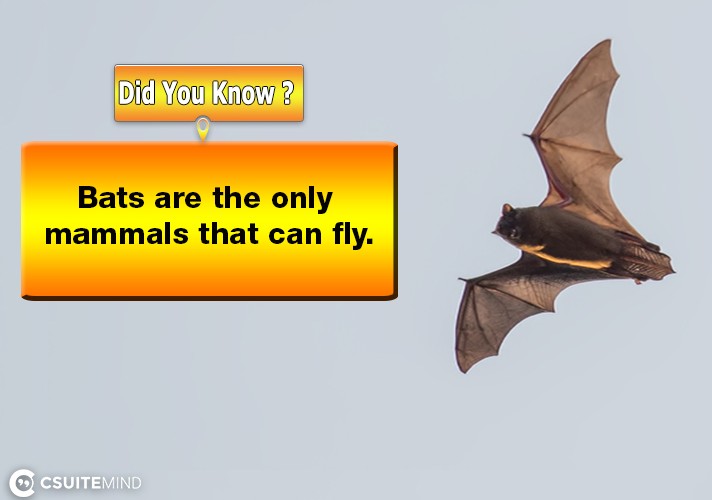Bats are the only mammal that can fly in fact all the world s over 1 100 species 40 in north america of the bat family fly

Bats: The Fascinating Flying Mammals

Bats are the only mammals that have truly mastered the art of flight. With over 1,100 species worldwide (including 40 in North America), these winged wonders are proficient aviators that navigate the night skies with unparalleled grace and precision.
The Exclusive Aviators
Bats, scientifically known as Chiroptera, come from the Greek words “cheir” and “pteron,” meaning hand and wing. These incredible creatures possess a specialized anatomical structure that makes them unique among mammals. Their forelimbs have elongated fingers that are connected by a thin membrane of skin, forming wings. This adaptation allows bats to generate lift and maneuver in the air efficiently.
The Secrets of Bat Flight

Flying bats exhibit a remarkable level of agility and versatility. Their wings can vary in shape, making each species specialized for different types of flight. Some bats have long, narrow wings ideal for swift and straight flight, while others have shorter, broader wings suited for maneuvering through cluttered environments.
Bats achieve flight by utilizing a unique combination of powered flight, gliding, and soaring. By flapping their wings in a circular motion, they generate lift that counteracts gravity. This motion allows bats to take off vertically from the ground or a hanging position, making them exceptional in terms of aerial mobility.
The Bat Family: A Diverse Array
From tiny bumblebee bats, measuring a mere 1.5 inches in length, to the mighty golden-crowned flying fox with its impressive wingspan of up to 6 feet, bats display an astounding diversity. They inhabit a wide range of habitats, including forests, deserts, and even urban areas. Their diet spans from nectar, fruit, and insects to fish, frogs, and small mammals.
Bats play a crucial ecological role as pollinators, seed dispersers, and insect controllers. Their diverse feeding habits make them significant contributors to plant reproduction and pest control, ensuring the stability and balance of ecosystems they inhabit.
A Misjudged Reputation
Despite their invaluable ecological contributions, bats often face misjudgment and fear due to misconceptions. It is essential to dispel common myths and emphasize the valuable role these mammals play in our world. Contrary to popular belief, the vast majority of bats are harmless and shy creatures that aim to avoid human contact.
Understanding and Conservation
In scientific research, bats have become a subject of great interest due to their exceptional adaptations and unique biological features. Investigating their flight capabilities, echolocation abilities, and physiological adaptations provides insights into the broader study of mammalian evolution.
With the growing awareness of environmental conservation, it is crucial to protect these remarkable creatures and their habitats. By preserving their natural habitats and educating the public about the importance of bats, we can ensure their survival and maintain the delicate balance of our ecosystems.
For more information about the amazing world of bats, please visit NorthAmericanNature.com.
*Note: This article is based on the information and research available at NorthAmericanNature.com.
Related Posts
Quick Links
Legal Stuff

